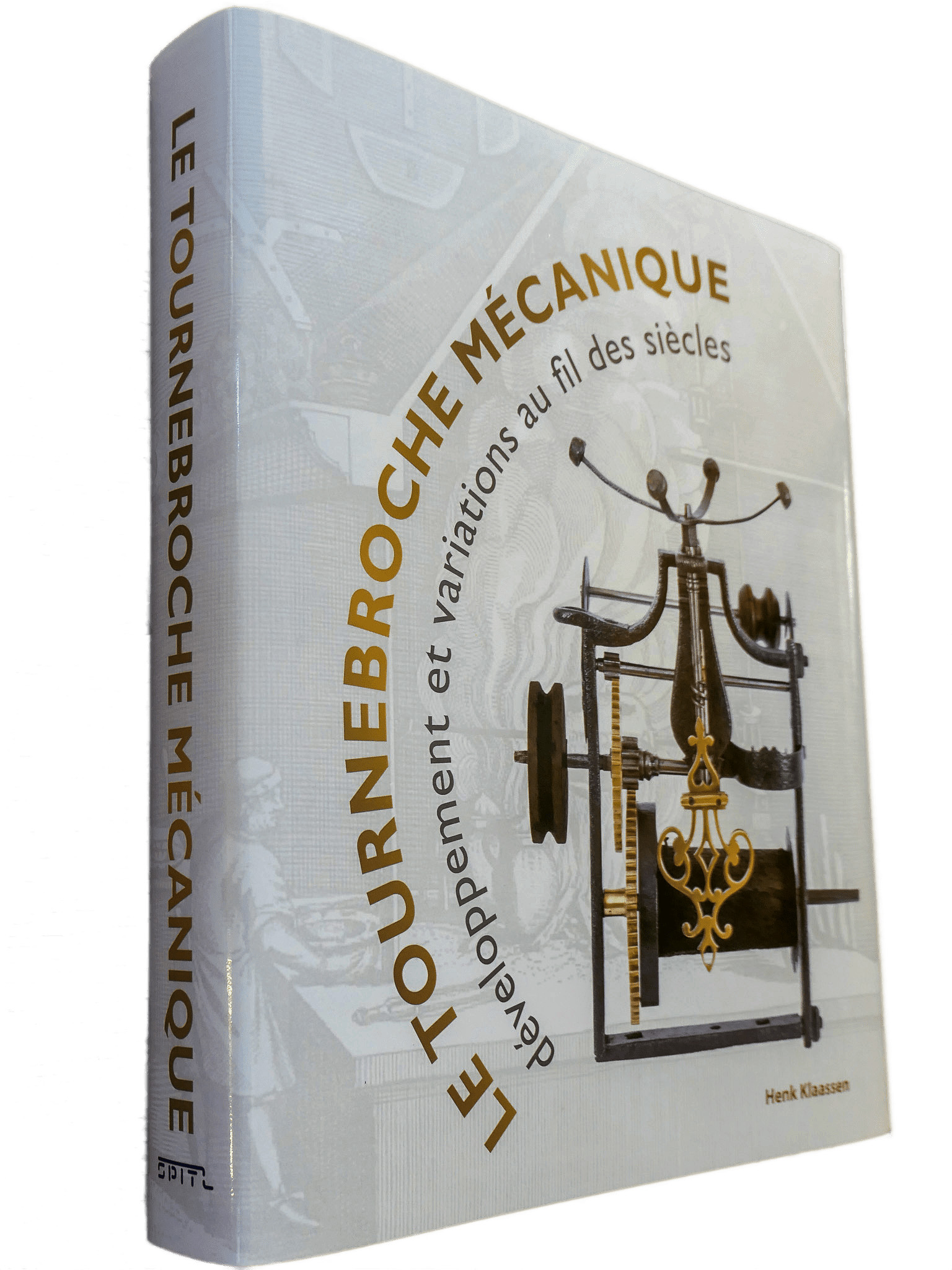Grilling meat on the spit in the fireplace
Roasting jacks (or spit jacks) were used in the kitchen to facilitate grilling meat or other dishes on a spit in an open fire by rotating (or turning) the spit. One can recognize four types of rotating spit mechanisms:
Manual rotating spit: manual spit
The simplest rotating spit has been used since the first century BC. This is a turnspit in which the spit was turned by hand by means of a lever.
Hot air powered rotating spit: air spit
These rotating spits are set in motion by the hot air of the open fire. A paddle wheel in the chimney rotates through the hot air of the fire. The rotating movement of the paddle wheel is transferred by a few gears to the spit in front of the fireplace. This type of rotisserie probably dates from the 15th century.
Weight-driven roasting jack: weight jack
During the late Middle Ages, a mechanism was used in which a weight -mostly a stone- and gears were used to turn the spit.
Spring-driven roasting jack: clockwork jack
From the 18th - 19th century, a mechanism was introduced in which a spring was wound up to drive the spit. These clockwork roasting jacks were smaller in size and thus not suitable for very heavy pieces of meat. In addition, many other ways were tried to drive the spit, such as using dogs, steam, and smoke.
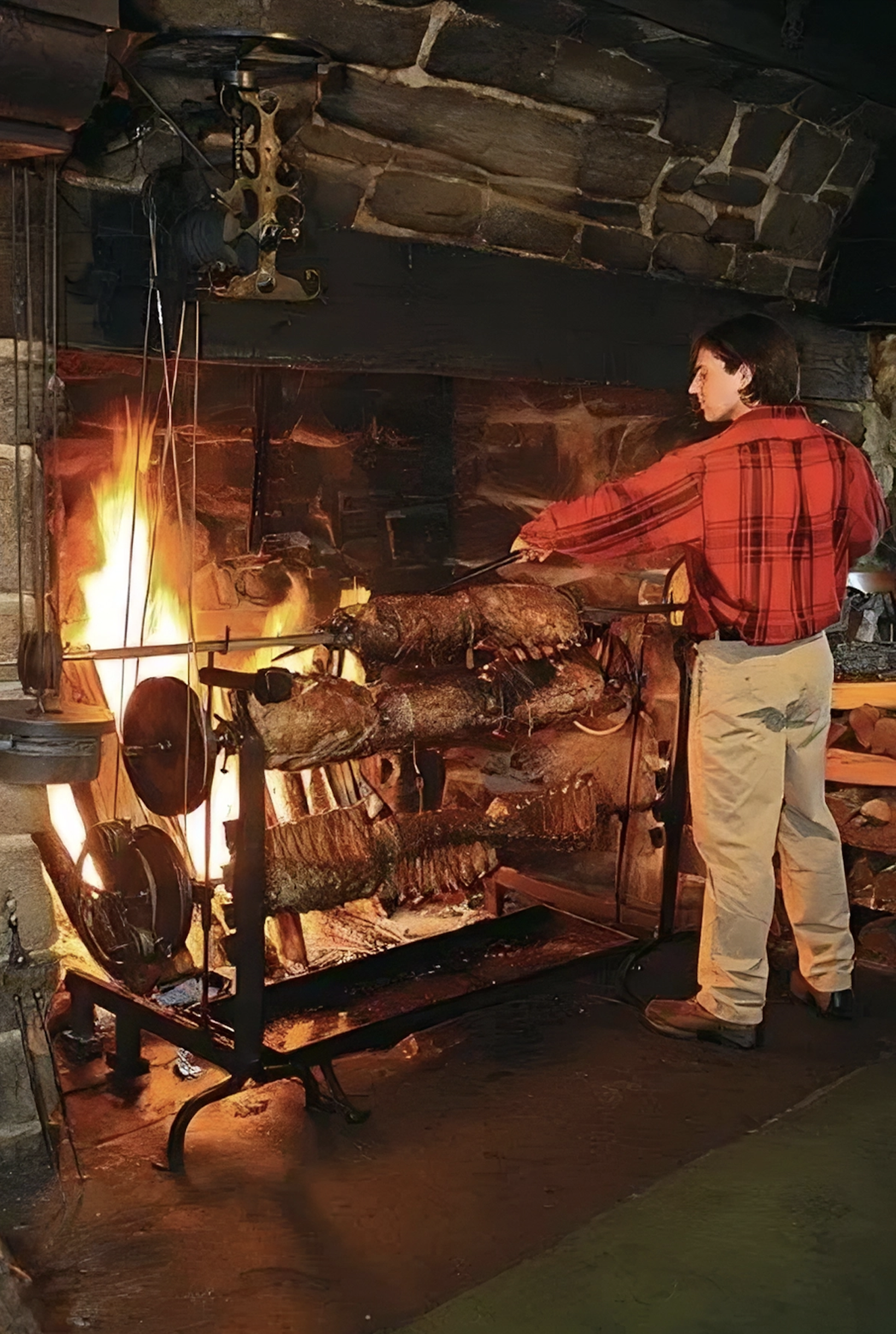
The use of manual turnspits
The manual turnspit has been used for grilling meat on an open fire since the first century BC. The meat could be cooked and roasted on different sides by turning it. A manual turnspit consisted of a rotating spit with a handle that could be turned around on two andirons. The most commonly used stands were the andirons with spit hooks. In addition to grilling meat, the andirons are used to lay firewood. This creates good aeration of the fire and prevents the wood from rolling out of the fire. The latter is certainly the case when using logs. In France, these andirons with spit hooks are called "landiers". They are of Gothic origin.
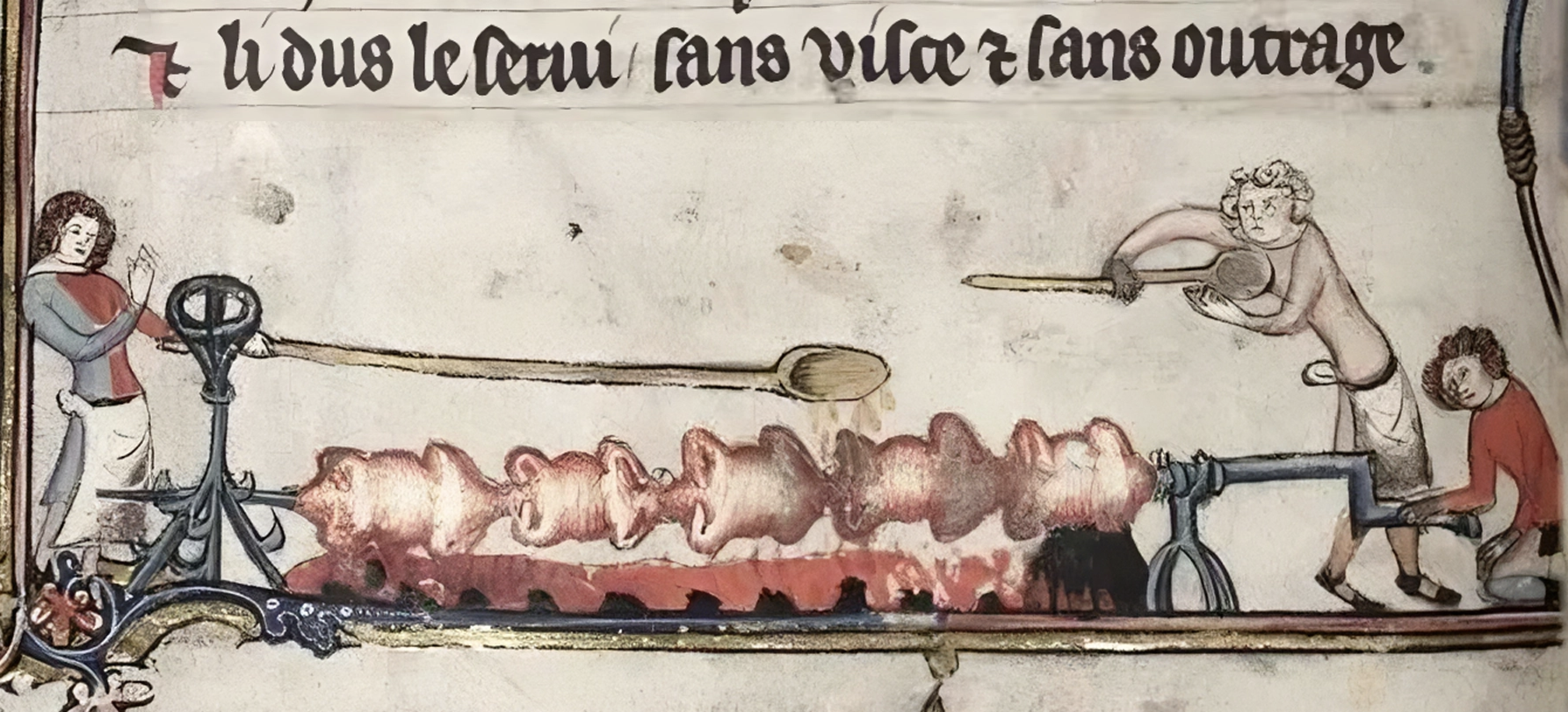
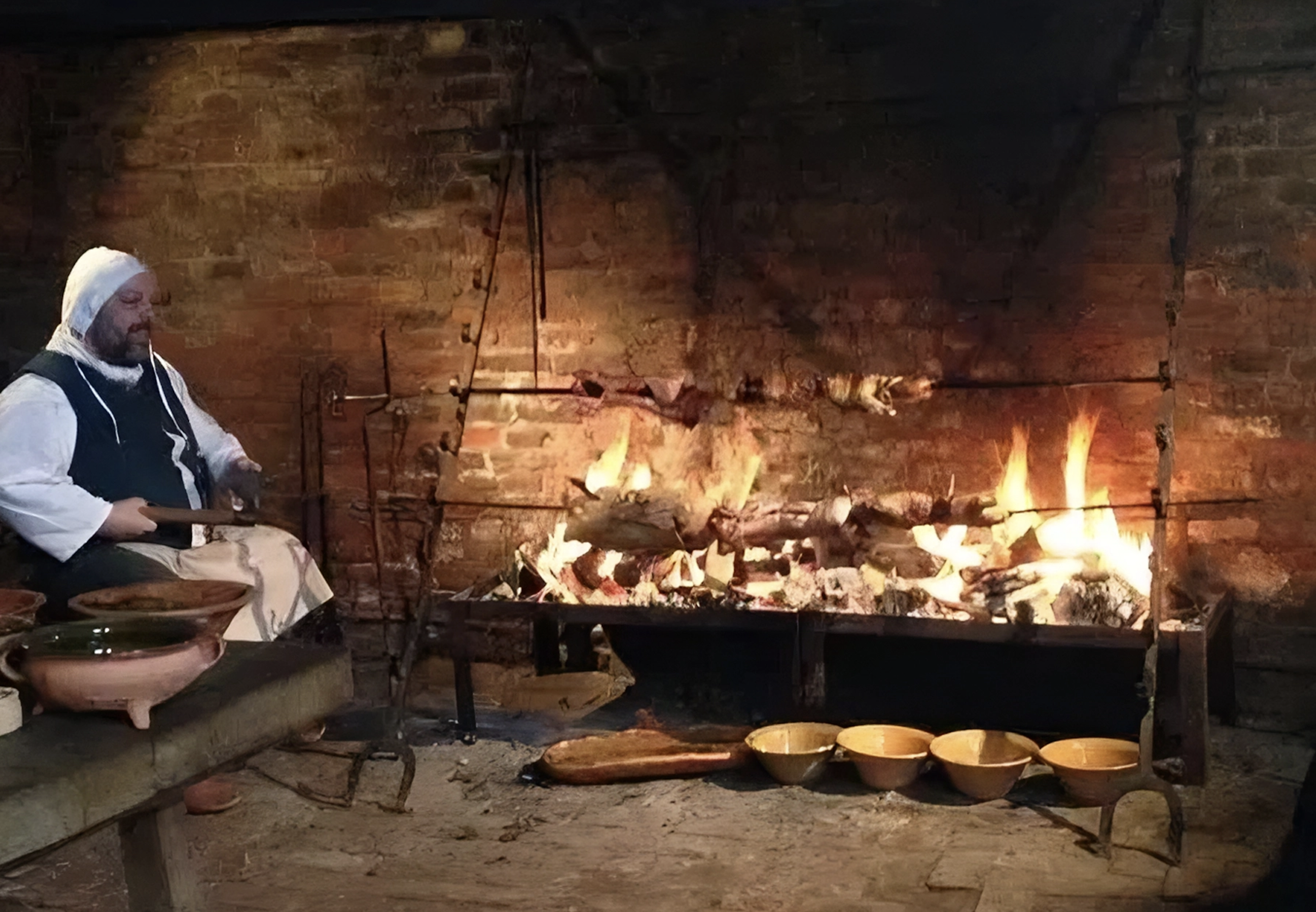
Antique manual turnspits with lever or handle are hard to find. We have some on our site: Our collection of manual turnspits
We have plenty of landiers: A part of our collection of andirons with spit hook.
The use of weight-driven roasting jacks
From the late Middle Ages, weight-driven roasting jacks were used in the kitchen. The device must be attached to the chimney (rim) beside or above the fireplace's opening. A wide fireplace with a wide chimney is required for this purpose. More complicated mechanisms were also used here to run several spits simultaneously at different heights. Large pieces of meat could also be roasted and cooked on the powered spit. The weight-driven rotisserie has always been expensive equipment and therefore reserved for the nobility and large institutions such as hospitals.
Installations for hanging the spits were built in front of the fire, but andirons with spit hooks were also used for this purpose.
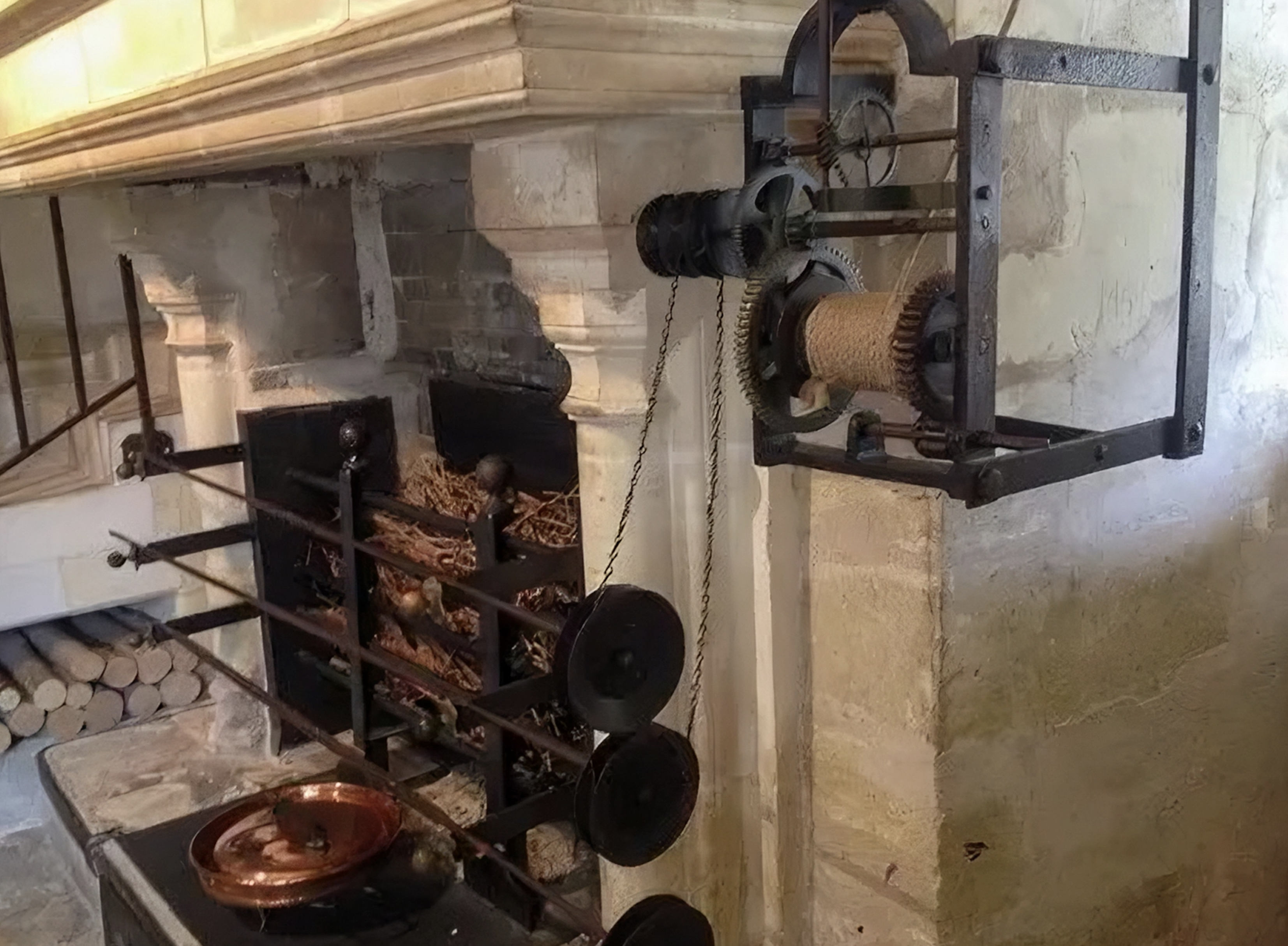
Weight-driven roasting jack with 3 spits in Chenonceau, France
Look also at this weight-driven roasting jack in action: Attractive movie of cooking with a weight-driven roasting jack by fxcuisine
Central to the operation of the weight jack is the drive of the spit using a weight, a rope or chain, and one or more gears fixed in a wrought iron frame. The weight is usually stone, but can also be made of lead or copper. A minimum of two gears are required to drive the shaft with the spit. Extra gears are also used to generate extra force with the mechanism. Each weight-driven rotisserie has a so-called 'regulator'. A regulator is somewhat like a propeller and has the function of obtaining a regular rotation. If the regulator is running, you can assume that the spit is turning. The spit often rotates so slowly that it is difficult to see with the eye. There is a wide variety of weight-driven rotisserie. They vary in size, in complexity, and in shape and decoration.
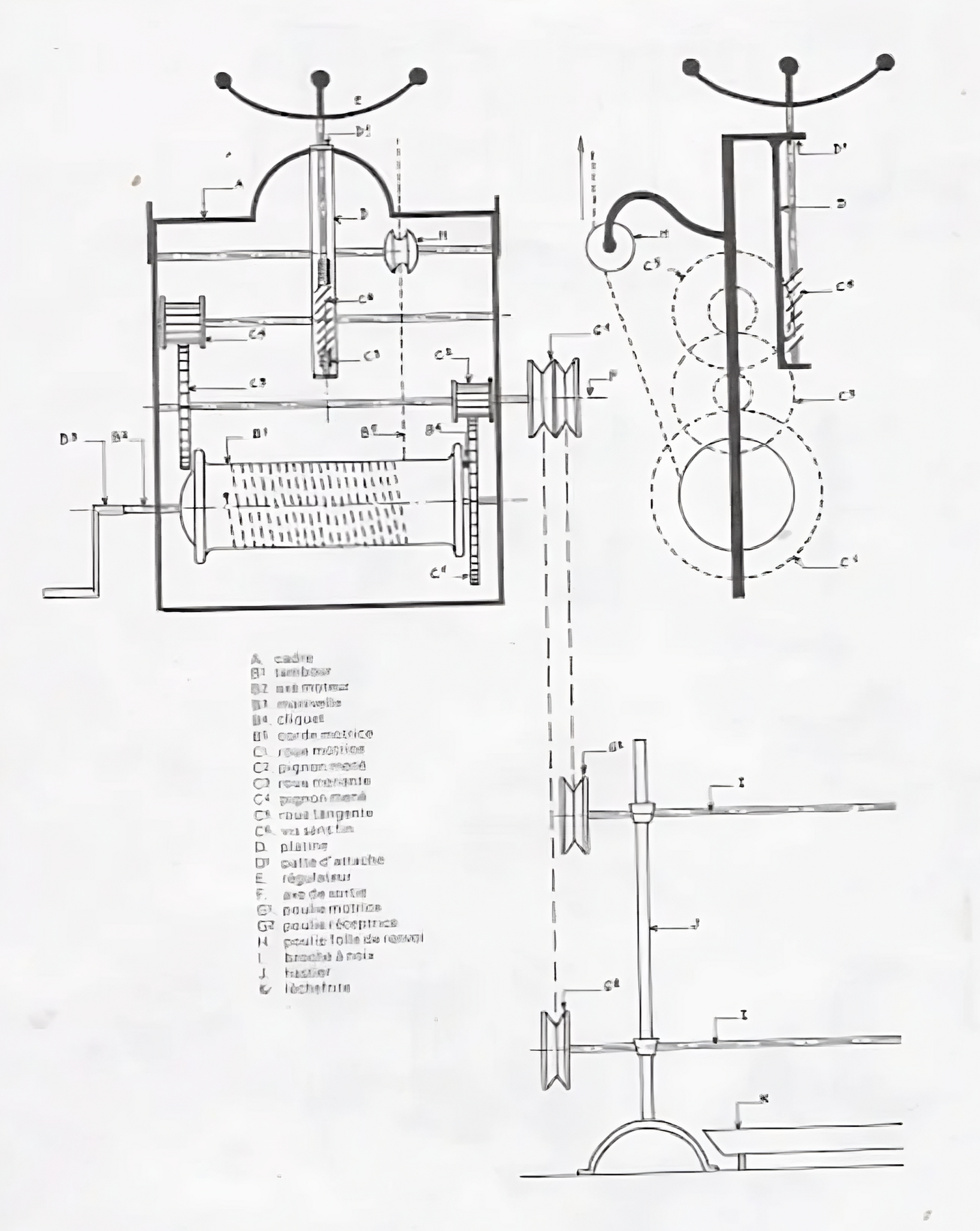
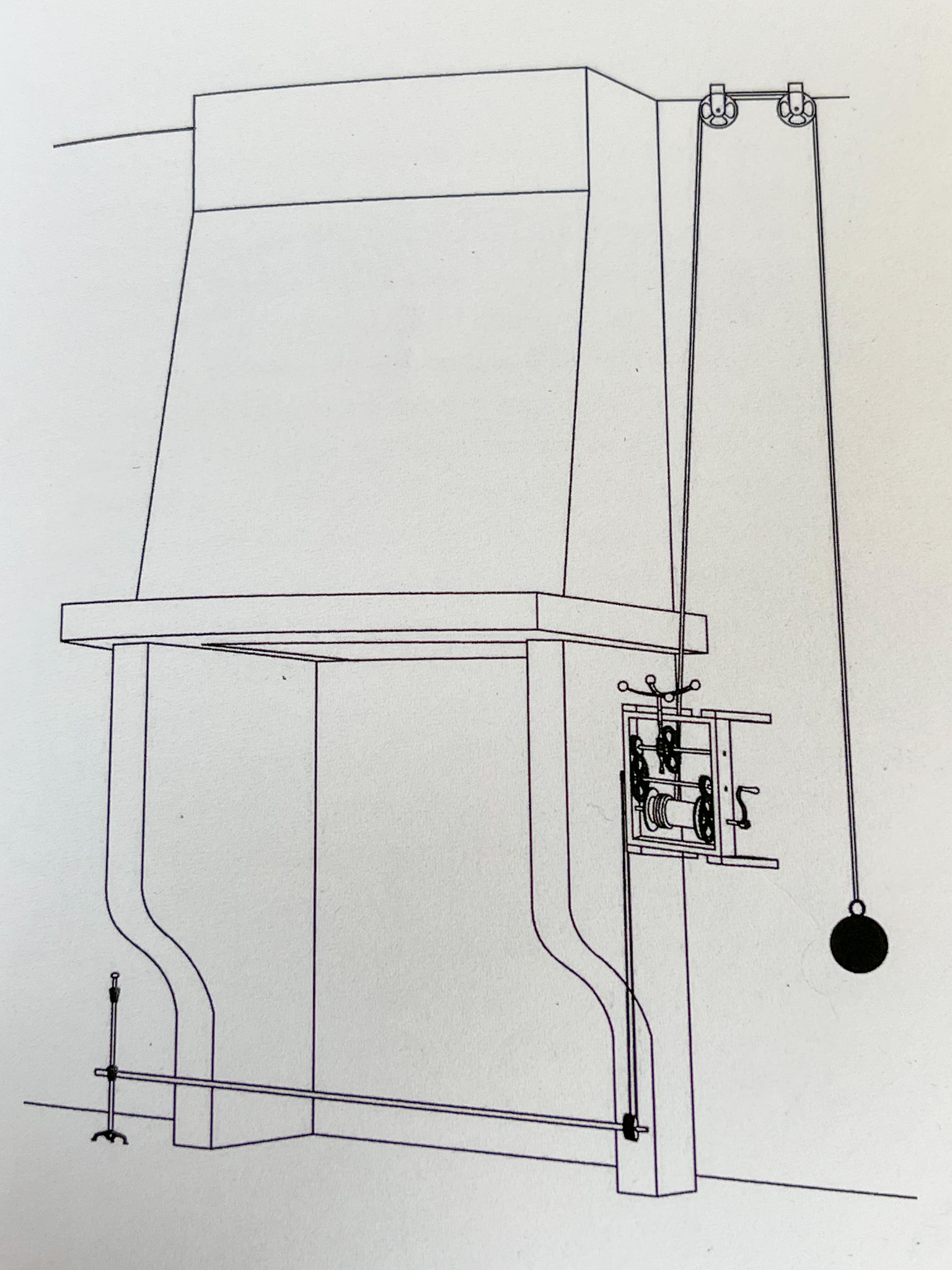
The correct placement of the weight driven spit jack. Source: De kleine gids van het Franse draaispit, H.L. Klaassen (2018)
Weight-driven jacks come on the market very rarely and are rarely complete. A complete set includes the following parts:
- a set of gears
- large central wooden pulley for rope with a weight
- a lever to wind the central pulley
- rope
- weight (stone, lead, or cast iron)
- pulley to drive the spit by chain
- chain
- supporting wall pulleys to guide the rope weight along the wall and ceiling
- regulator to regulate the rotation of the mechanism
The weight spit jack is mounted to the right or left of the fireplace on the wall supporting the chimney or on the wooden mantle. Any support rod used to hang the castle clock on the wall must be custom-made by a blacksmith.
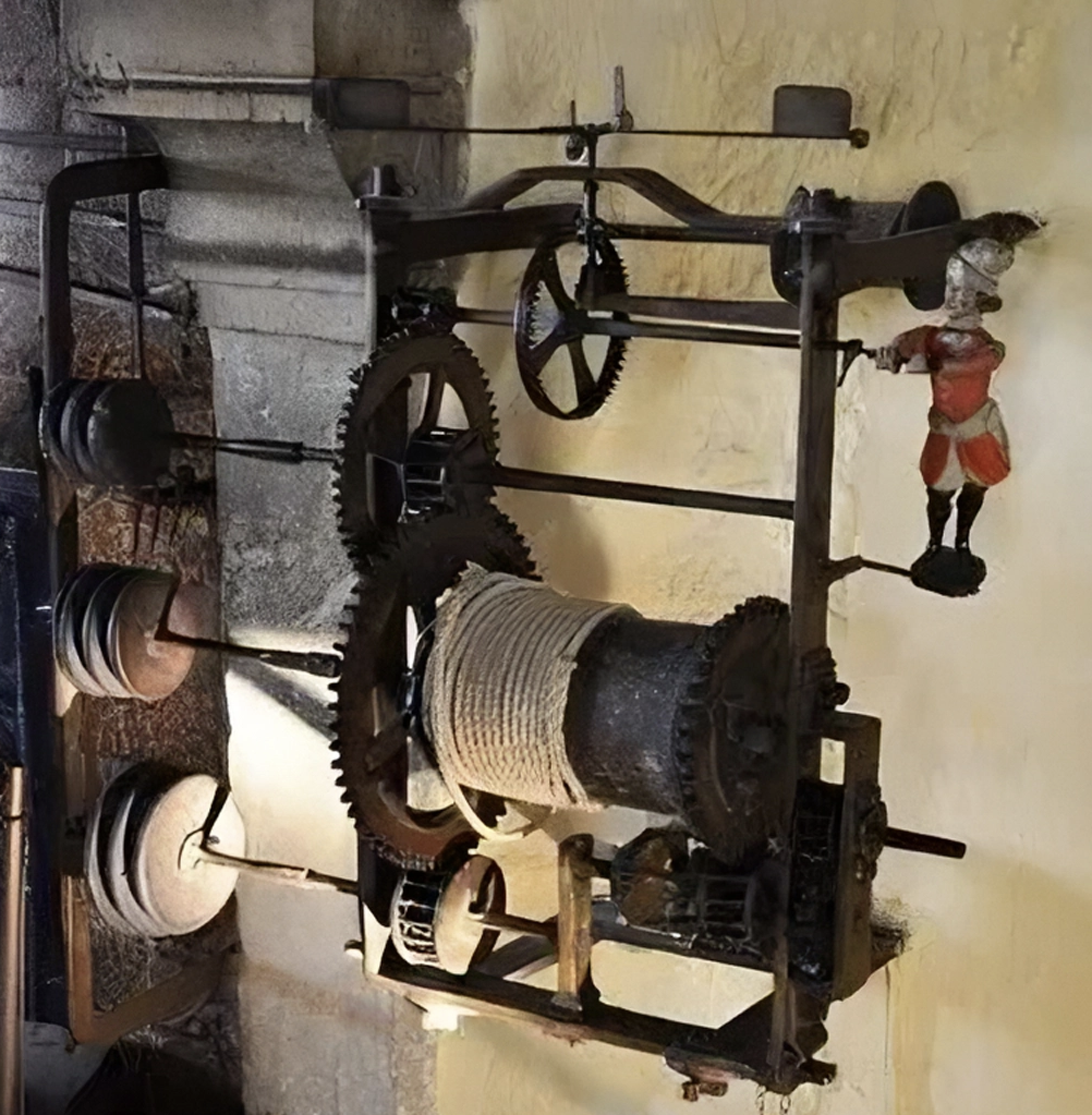
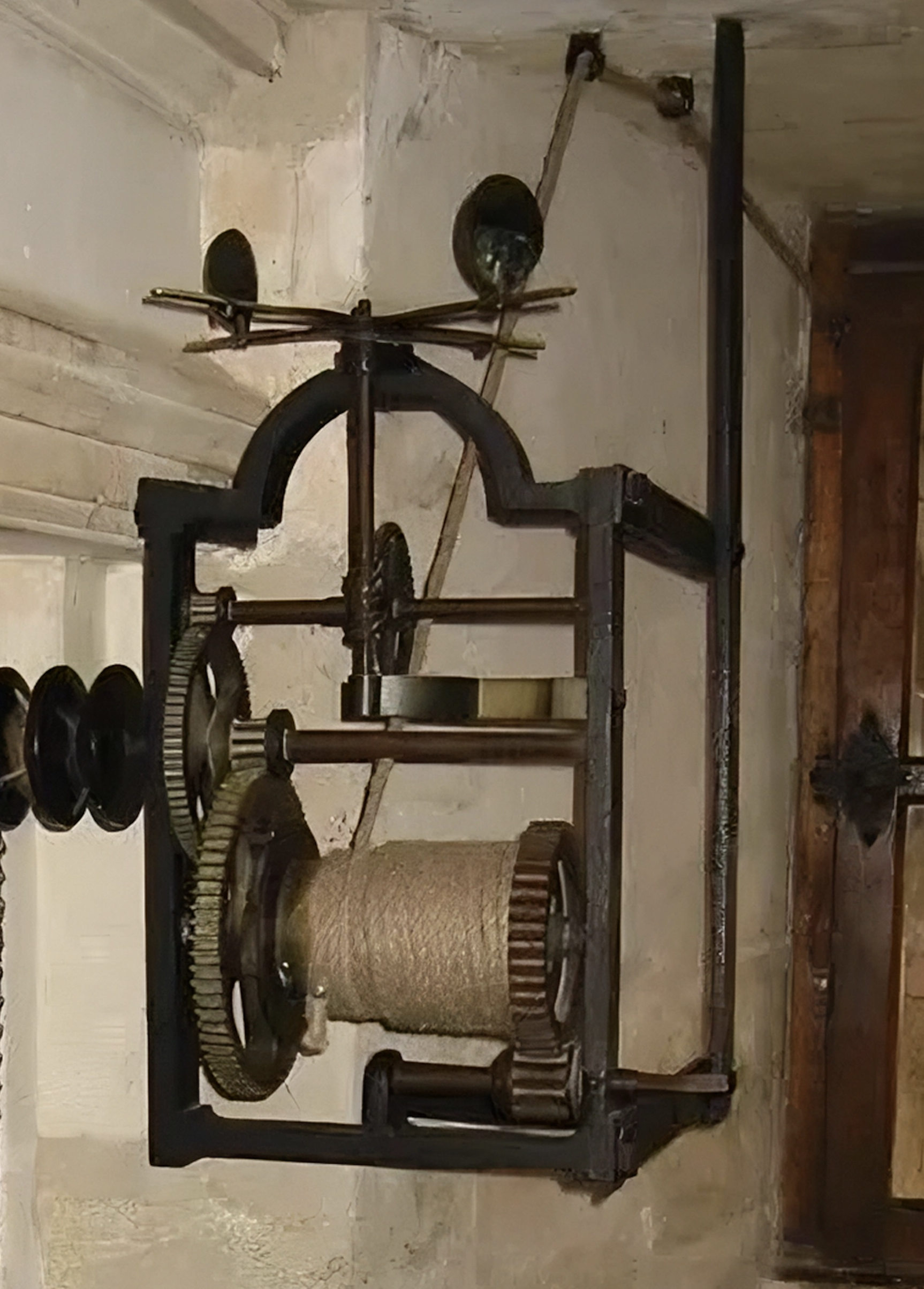
Original weights are especially hard to find. Complete, original installations with spits and stands are no longer for sale but can be made by a blacksmith. Incidentally, we sell individual parts of such an installation, such as spits and stands. Andirons with spit hooks are widely available.
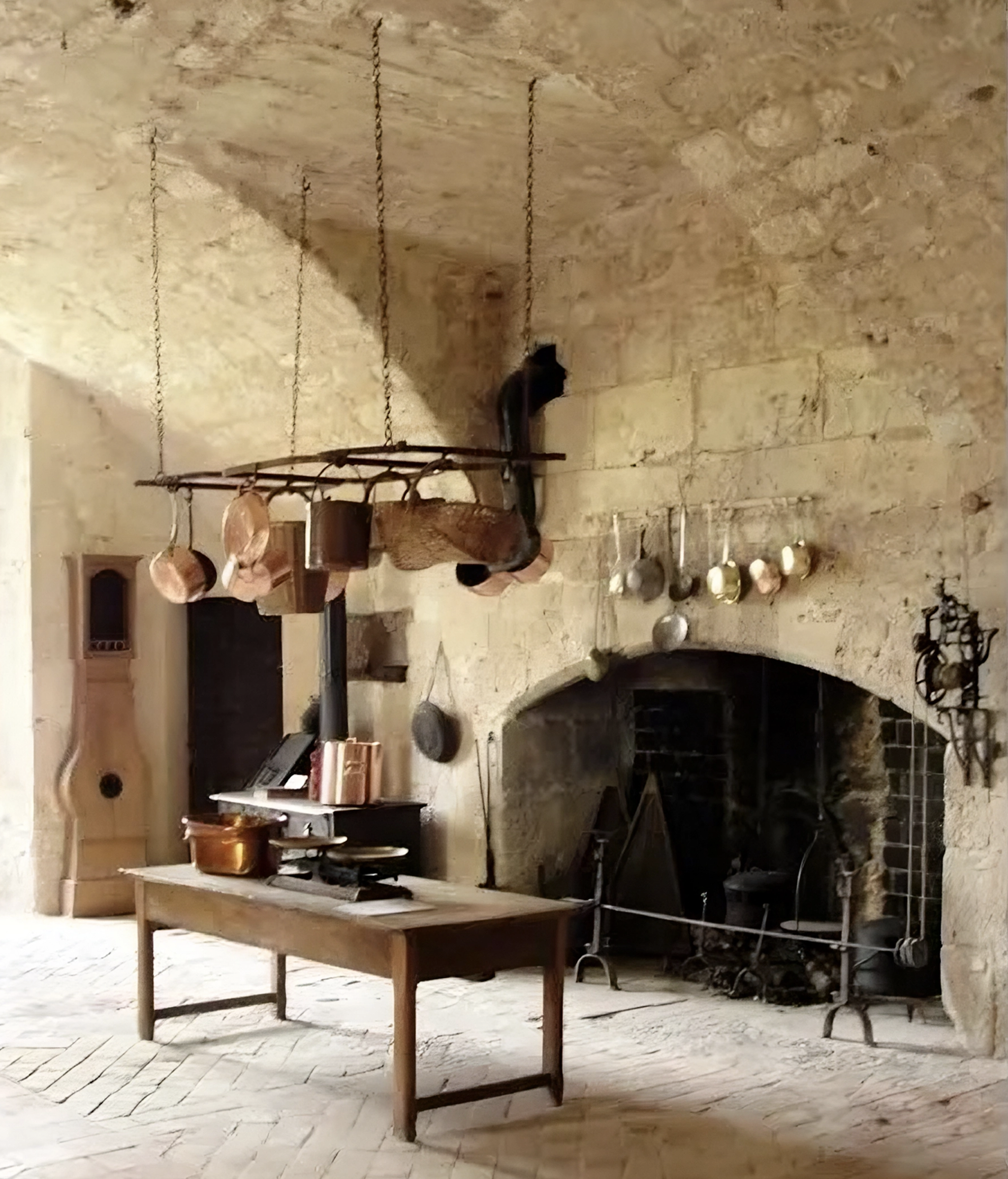
In addition, we have a large selection of nearly complete and incomplete weight jacks on our website. For this, we have developed the following quality categories (*, **, ***) that are indicated with each weight jack:
- Decorative (*): The mechanism no longer works (well).
- Working, incomplete (**): The mechanism still works on the force of the weight, and the brake on the central pulley also still works. However, the set is incomplete.
- Working, (almost) complete (***) : A (nearly) complete set with a working mechanism. The set can still be classified as '***' with a missing chain, rope, or weight. Also, it cannot be guaranteed that the weight is heavy enough to keep the mechanism working.
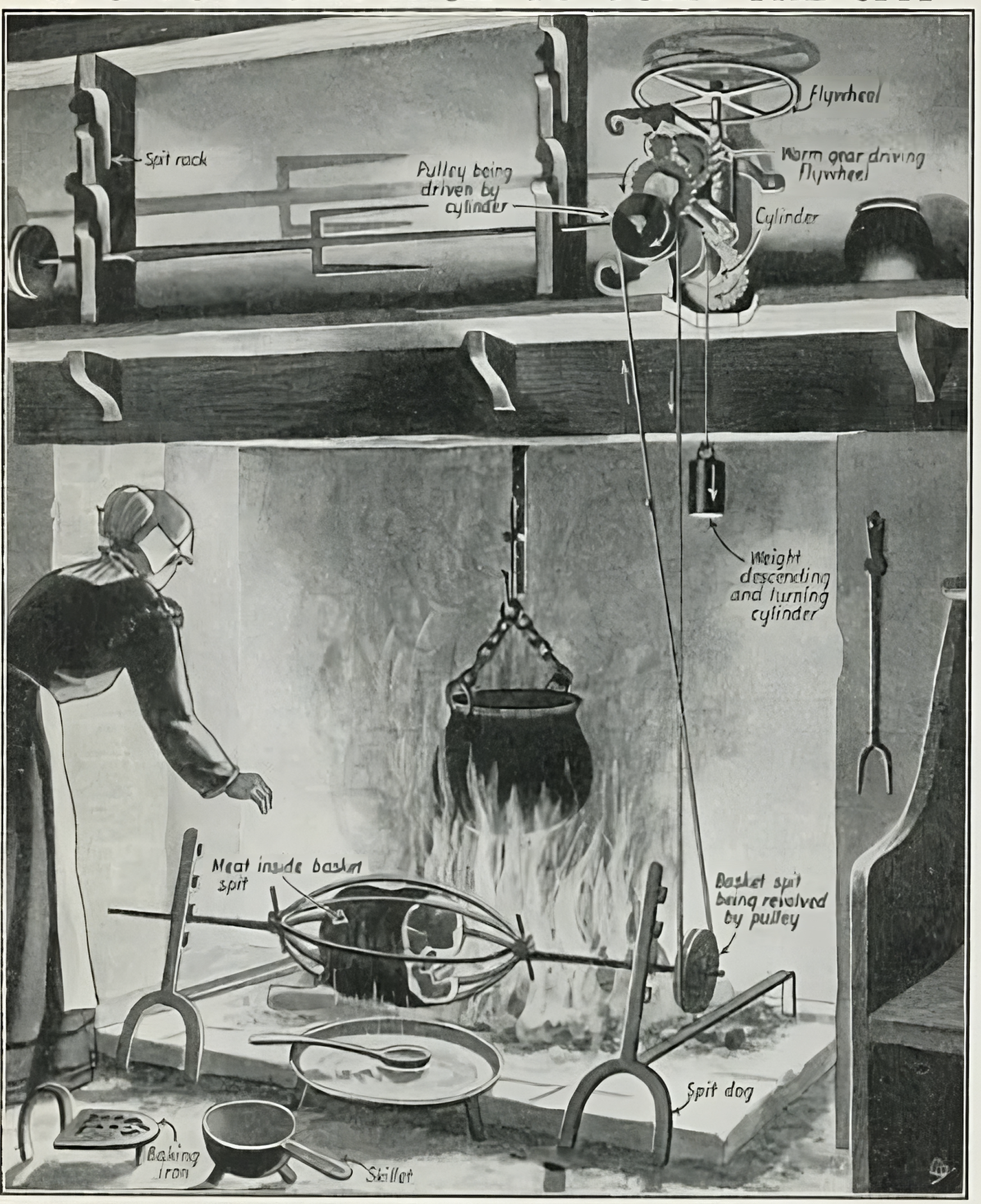
Spring-driven roasting jacks and their use
From the 18th - 19th century, spring-driven or clockwork spit jacks were used. The spit is driven by a spring and a shaft and gear system. The whole is usually mounted in a metal box. The spring is wound up using a key. The cupboards are usually quite small and are placed on the ground in front of the fire. The spit is attached to one of the shafts in the box and rests on the other side on a, usually small, stand or on the spit hooks of fire andirons. Here too there is great variation in shape, size and decoration. There are also "bottle jacks" where the clock mechanism was hung above the fire.

On the spring-driven roasting jack, smaller pieces of meat are roasted and cooked, such as chickens, pheasants, pigeons, sausages, and fish. There are also accessories for the clock spit jack that allow potatoes and chestnuts to be cooked. Clockwork roasting jacks are therefore suitable for smaller fires in smaller fireplaces. Like the weight spit, the clock jack sometimes has a propeller on top or under the cabinet to see if the mechanism is actually working.
Because clock roasting jacks are of a more recent period, we have several on our site. Almost all the clock jacks we sell are functional and still working. We like to sell the spring-driven roasting jack complete with all its accessories. This includes the spit, stand, drip pan, and spoon to baste the meat. With this set it is possible to roast meat in front of the fireplace yourself. A fun activity with a tasty result.
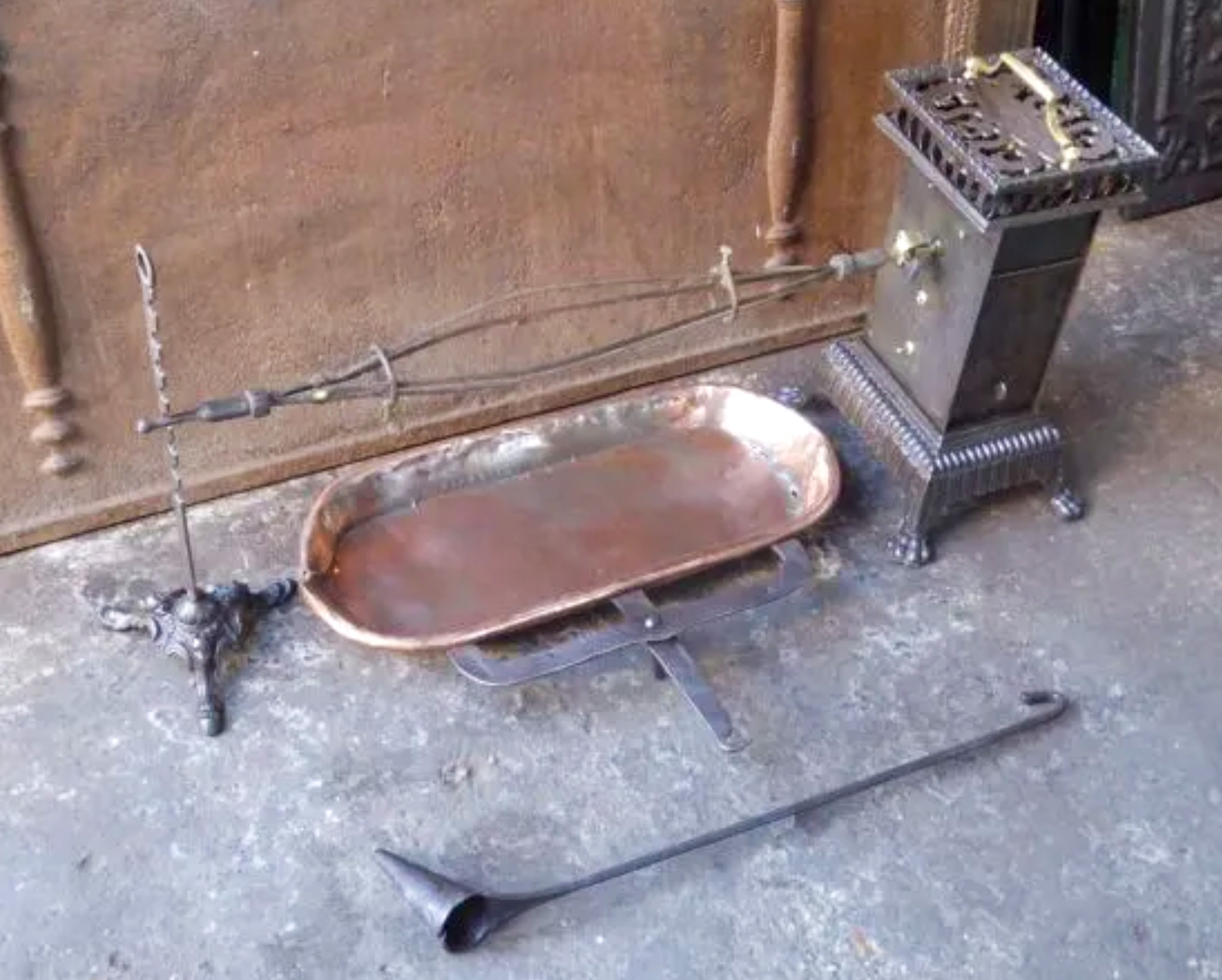
In this video, Jamie Oliver cooks grills lamb with a roasting jack at home:
Accessories for a manual or mechanical rotating spit in a fireplace
- Spit
- Drip tray, large for the weight-driven roasting jack and small for the spring-driven jack.
- Tasting fork
- Stand for the spit
- Baster
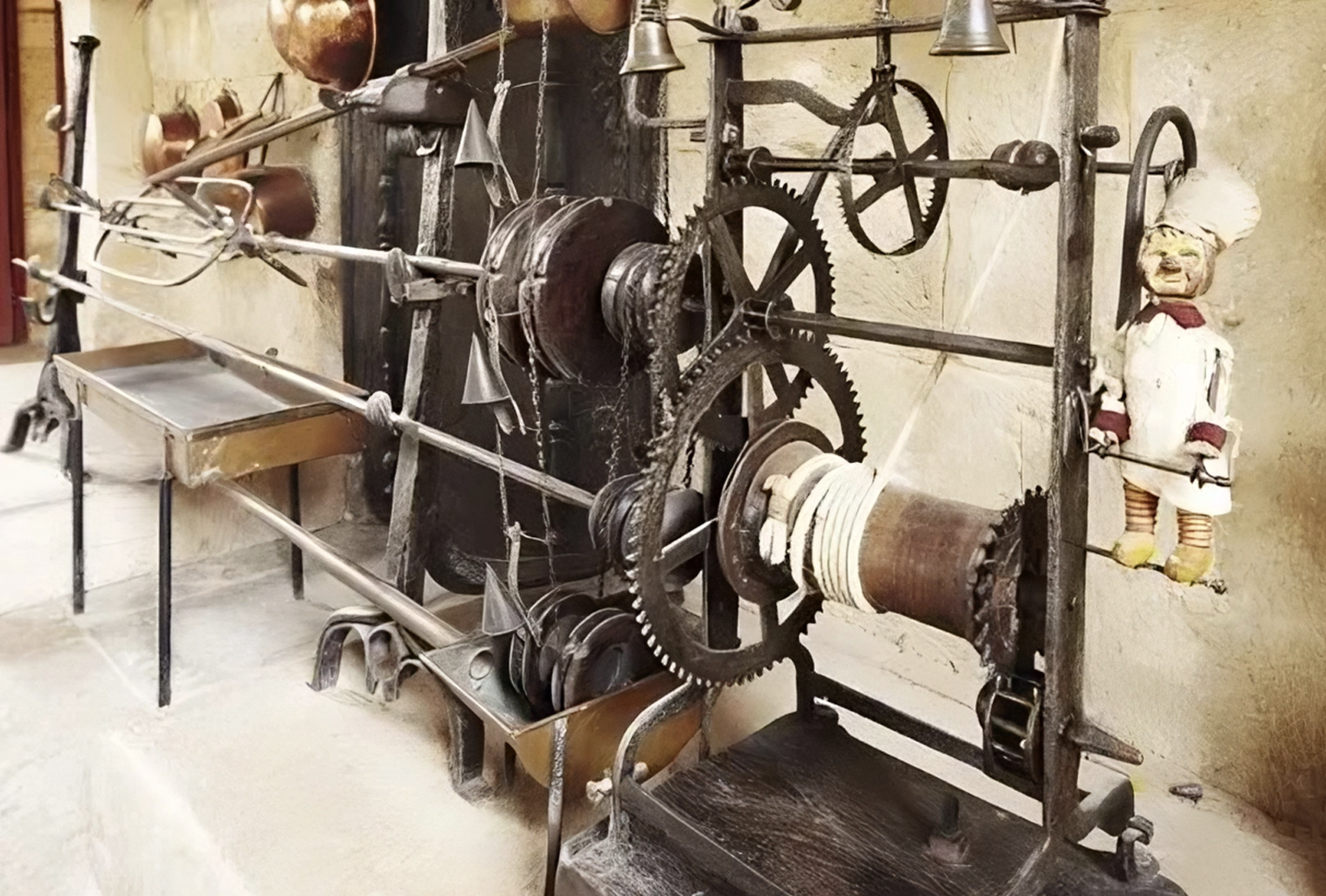
Reference
Browse our webshop
Browse here our current online stock of antique clockwork roasting jacks and accessories
Browse here our current online stock of antique weight-driven roasting jacks and accessories
Browse here our current online stock of antique trammels and chimney cranes
Browse here our current online stock of antique gridirons
Browse here our current online stock of antique trivets
Learn more
Antique kitchen utensils for cooking in the fireplace
How do I cook in my fireplace with antique fireplace accessories?
How do I decorate my fireplace?
Which fireplace tools do you need?
10 Tips to improve the chimney draft of the open fireplace/a>
Nice gift ideas for fireplace lovers

